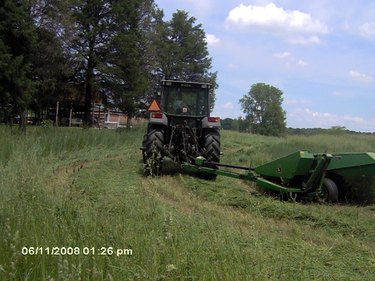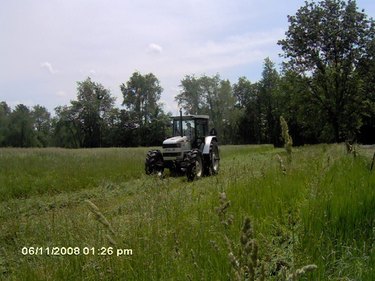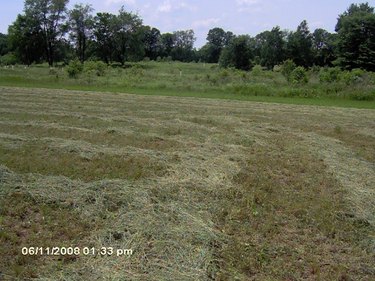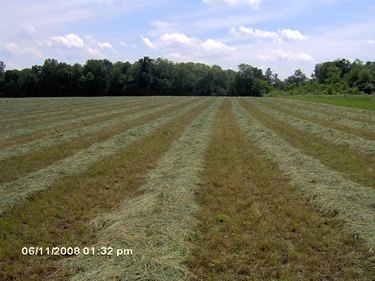Depending on the climate where you live you might be able to mow hay up to six times a year. Of course, there are other factors to take into consideration. Do you need hay that has the highest possible protein content or is volume your priority? The weekly weather forecast will affect your decision as well. You do not want your hay to get rained on after it is mowed, especially after it is dry enough to bale. Hay that has been rained, on loses some nutritional value, loses color, can mold, and may not sell. When you mow a hay field at the correct time, you can maximize your profits.

Video of the Day
Things You'll Need
Mower
Tractor
Step 1

Open up the mower when you arrive at the field. Turn on the PTO. Set the tractor to the correct RPM. Begin to drive forward and lower the mower to the ground at the same time.
Video of the Day
Step 2

Drive around the perimeter of the field a few times until there is enough room to turn the tractor and mower around on the headlands. Decide if you will cut the field in half or thirds.
Step 3

Mow down the center of the field, depending on width, after you have mowed the headlands. Mow straight rows from one end of the field to the other end. Make your rows as close as possible to reduce fuel consumption and time, but far enough to turn the tractor and mower around in one smooth motion.
Step 4
Continue mowing straight paths, back and forth across the field, until the entire center is mowed.
Step 5
Turn your tractor around and mow the outside round. This is the outer perimeter that your tractor was driving on when you made your first trip around the field.
Step 6
Wait for the hay on the ground to dry on top and then rake it over.
Tip
If it has to rain on your hay, just after mowing does the least damage. First cutting is highest volume but lowest quality. Consecutive cuttings decrease in volume but increase in quality. For any cutting with a lower yield, decrease the windrow width so it doesn't bleach out as much. Mow Alfalfa with 10 percent in flower for maximum protein, mow later for increased quantity.
Warning
Never store wet hay inside a barn; it will burn the barn down. Do not mow a newly planted alfalfa field late in the season; you will kill all of the alfalfa.